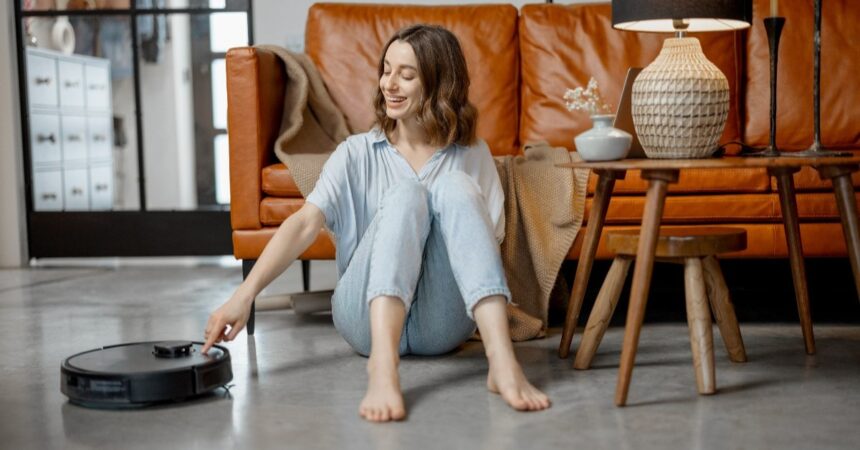Robots are increasingly moving into households across the world, bringing new levels of comfort, convenience and security to people’s lives. From automated cleaning and maintenance to personalized assistance, smart surveillance and even companionship, robotic technology is transforming the way consumers manage their domestic environments.
Here we look at four home automation segments to see what’s driving the trend and how brands and retailers can capitalize on the robotic revolution. We also look ahead to see what the future might hold for robotics in the home.
Robot vacuum cleaners at the vanguard
Leading the home automation trend is the robot vacuum cleaner. Sales of robot vacuum cleaners have been steadily growing since 2017, thanks to a strong value proposition and persuasive use cases. Though the segment has declined in line with general market deceleration over the last year, robotic models still accounted for more than 22% of vacuum cleaners sold between January and May 2023, compared with only 13% in the same period of 2017.
In just a few years, robot vacuum cleaners have become a staple in households worldwide, offering an efficient and time-saving solution for keeping floors clean. They often come equipped with features like mapping technology, virtual barriers, and scheduling capabilities. With advanced sensors and intelligent navigation systems, these devices can autonomously navigate different surfaces, detect obstacles, and clean hard-to-reach areas. Mapping technology enables them to create an internal map of the home, allowing for efficient cleaning patterns and avoiding areas where they are not needed. Additionally, scheduling capabilities allow users to set cleaning times in advance, so their homes can be cleaned when they are out.
These innovative features that genuinely save the owner time and hassle are driving a rapid evolution of the product and have quickly become expected norms. For example, six years ago only 30% of robot vacuum cleaners were able to be operated remotely via a smartphone or tablet app. Today, 94% have these convenient smart features, which tend to come coupled with enhanced navigation and scheduling capabilities.
Another major innovation in the past years has been the upgrading of the robots with docking stations. The first generation of docking stations only allowed charging – and this segment is already in decline. Similarly, in 2017, the vast majority (68%) of robotic machines offered dry suction only. But just a year later, 44% offered both dry and wet suction, and this rose to 74% by 2022. While the evolving multifunctionality of the robot vacuum cleaner provides a wealth of opportunities for innovative brands, it also poses risks as earlier models are quickly superseded.
Robot lawnmowers: opportunities at the cutting edge
Another category where robotics are on the rise is lawnmowers. With consumers spending more time at home after pandemic lockdowns normalized hybrid working, their focus on upgrading and improving their homes has continued. This partly explains why the robot lawnmower is fast gaining ground with consumers, similar to its floor-cleaning cousin. Just over a fifth of lawnmowers sold in the first five months of 2023 were robotic.
Again, it is their ability to save time and physical effort that is the critical factor for buyers, meaning manufacturers can apply many of the same lessons learned from the evolution of robotic vacuum cleaners.
Refining features that boost the owner’s confidence such as boundary wires and adaptive cutting height adjustment are growing in popularity. For example, mowers that can detect no-go zones such as flowerbeds through magnetic barrier sensors grew by 3% in the first five months of 2023 compared to the same period last year.
In terms of navigation systems, robot lawnmowers are trailing behind robot vacuum cleaners, creating an opportunity for brands able to introduce more sophistication on this front. Most robot lawnmowers still have random navigation, and sales of these grew by 3.5% in the first five months of 2023. Mowers with GPS and camera navigation are emerging and growing in this category, mirroring the multifunctionality we have seen in vacuum cleaners. Given the demand for convenience and performance that has boosted robot vacuums, we expect lawnmower manufacturers will be able to tap into these trends to drive future growth.
Robot swimming pool cleaners set to make a splash
Backyard swimming pool retailers also reported a surge in sales during the pandemic as consumers, particularly in the US and Europe, looked for ways to stay fit and enjoy life while cocooned at home.
Therefore, another growing opportunity for manufacturers is the robotic swimming pool cleaner, which operates independently, navigating the pool and covering all areas, ensuring comprehensive cleaning simply and efficiently.
Robot pets – the next big thing?
Pet robot companions have become an intriguing highlight at recent major trade shows such as IFA and CES, capturing the attention of attendees and media alike.
Equipped with artificial intelligence, sensors and lifelike features, pet robots mimic the behavior and appearance of real animals, creating a sense of emotional connection. They can respond to touch, learn from interactions, and even display emotions through expressive gestures and sounds. And with marketing targeted at certain age groups, such as older single people, they can tap into a strong need for companionship.
Whereas robotic pets may once have been regarded as novelties or toys, insightful brands will recognize in them many of the drivers of the booming home automation market: namely the desire for a more comfortable, convenient and enjoyable domestic life. On one end of the spectrum, social isolation is regarded as a global public healthy priority for the older population; on the other end, one in four Gen Zs reported a feeling of loneliness in our Consumer Life study in 2022. Robotic pets could provide vital companionship, especially for individuals who are not able to keep traditional pets.
At the same time, our research shows that consumers are seeking out exciting, interactive and immersive digital experiences that spark joy in an era marked by anxiety about the cost of living, conflict, health and climate change. The friendly household robot ticks a lot of these boxes.
Intelligent machines are fast transforming our domestic environment, offering convenience, efficiency, and enhanced security. Through a granular and up-to-date understanding of what consumers want from them, brands and retailers can stay at the forefront of the robotic revolution.

![]()








